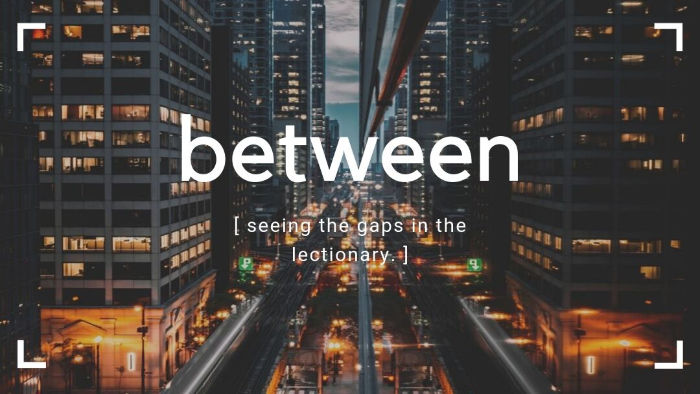A look at the gaps in the lectionary.
This week: the gap between
The text: John 6
We have spent the last four weeks in chapter six of the gospel of John and there have been virtually no gaps in the lectionary. But I suspect there pieces that we miss and a theme that can be difficult to detect. Not because we don’t see them, but because this gospel is wordy and shifty and contexts change out from under us.
This gospel starts on one shore, where the disciples, through Jesus, feed thousands. Then they depart to another shore, where the crowds and critics meet him. And there, as he is talking to them, the setting shifts to a synagogue in Capernaum. This is a remarkable time-shifting literary device the gospel writer employs that is reminiscent of a movie montage. Time and space are flexible when Jesus is speaking!
We also have a theme that runs from the beginning of the chapter to the end of the crowds awakening to Jesus and diminishing down to just his closest followers by the end. And this is the part that may be hardest to ignore—unless we keep focusing on the image of Jesus as the Bread of Life, that is. And I think that is just as difficult for people to keep track of as the time/space shifting.
There are three important moments that help paint the picture of the winnowing of Jesus’s followers over this one chapter.
- Jesus feeds the multitudes and they try to make him king by force.
- Jesus rebukes the crowd for following him to just get more bread.
- The critics of Jesus try to “get him” over the bread image.
We ought not overlook the magnitude of the people’s misreading of the miracle—or pretend like it should be inconsequential to either the story or what we ought to draw from it.
While many preachers will focus heavily on the image of the Bread of Life and what that means for Jesus—and I think we should—it may be at the expense of its context. This, however, is problematic, even as it may be easier to preach on. Precisely because Jesus is challenging people to think more deeply, strive harder to connect their faith to something beyond themselves, their safety and security, and the needs of themselves (and their families).
What we will see in this week’s gospel is the continuation of a comparison of himself to Moses, the bread of life to the manna given in the wilderness (Exodus 16). In it, Jesus seems to compare the people following him to get more food, wanting to make him King so he can continue to feed them, to how the people treated Moses—as if it were he who fed them rather than God.
The implication of this teaching is that people continue to misunderstand the call to discipleship—and what it means to follow Jesus. Which means we are just as likely to get this one wrong.
